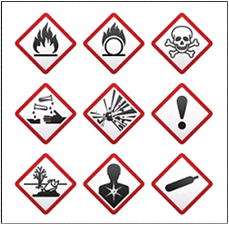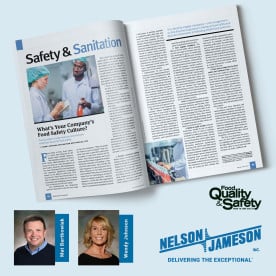 According to the United States Department of Labor, there have been a few changes to the Occupational Safety & Health Administration (OSHA) Hazard Communication Standard (HCS).
According to the United States Department of Labor, there have been a few changes to the Occupational Safety & Health Administration (OSHA) Hazard Communication Standard (HCS).
"The Hazard Communication Standard (HCS) requires chemical manufacturers, distributors, or importers to provide Safety Data Sheets (SDSs) (formerly known as Material Safety Data Sheets or MSDSs) to communicate the hazards of hazardous chemical products. As of June 1, 2015, the HCS will require new SDSs to be in a uniform format, and include the section numbers, the headings, and associated information under the headings below:
Section 1, Identification includes product identifier; manufacturer or distributor name, address, phone number; emergency phone number; recommended use; restrictions on use.
Section 2, Hazard(s) identification includes all hazards regarding the chemical; required label elements.
Section 3, Composition/information on ingredients includes information on chemical ingredients; trade secret claims.
Section 4, First-aid measures includes important symptoms/ effects, acute, delayed; required treatment.
Section 5, Fire-fighting measures lists suitable extinguishing techniques, equipment; chemical hazards from fire.
Section 6, Accidental release measures lists emergency procedures; protective equipment; proper methods of containment and cleanup.
Section 7, Handling and storage lists precautions for safe handling and storage, including incompatibilities.
Section 8, Exposure controls/personal protection lists OSHA's Permissible Exposure Limits (PELs); Threshold Limit Values (TLVs); appropriate engineering controls; personal protective equipment (PPE).
Section 9, Physical and chemical properties lists the chemical's characteristics.
Section 10, Stability and reactivity lists chemical stability and possibility of hazardous reactions.
Section 11, Toxicological information includes routes of exposure; related symptoms, acute and chronic effects; numerical measures of toxicity.
Section 12, Ecological information*
Section 13, Disposal considerations*
Section 14, Transport information*
Section 15, Regulatory information*
Section 16, Other information, includes the date of preparation or last revision.
*Note: Since other Agencies regulate this information, OSHA will not be enforcing Sections 12 through 15(29 CFR 1910.1200(g)(2)).
Employers must ensure that SDSs are readily accessible to employees.
See Appendix D of 1910.1200 for a detailed description of SDS contents."
For more information: www.osha.gov.





